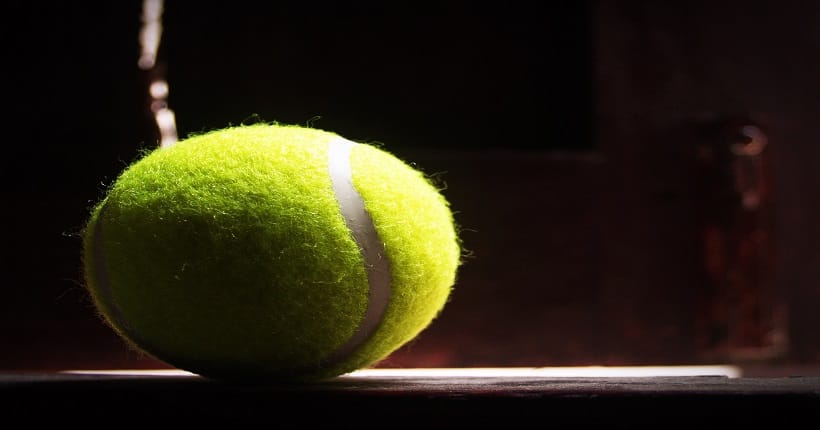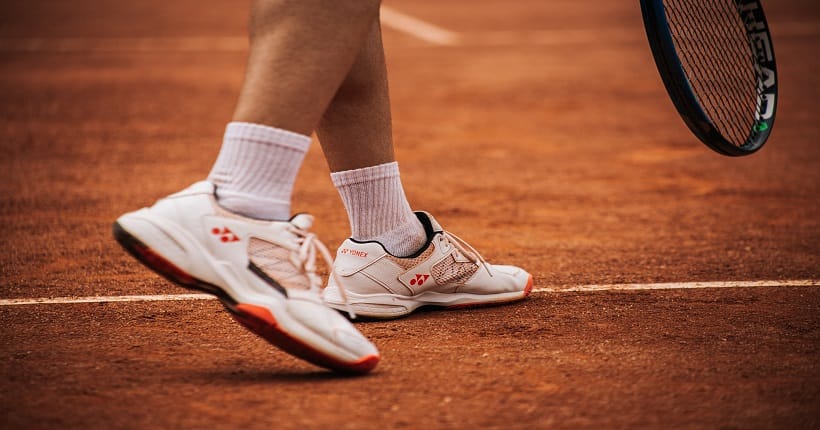Why Are Tennis Balls Pressurized?
Tennis balls are pressurized to provide the desired bounce and playability during matches. Additionally, pressurization helps to maintain the shape and durability of the ball, ensuring consistent performance over time.
Tennis, known for its fast-paced rallies and precise ball control, relies heavily on the equipment used, including the highly pressurized tennis balls. These small, yellow spheres have a secret behind their performance – pressurization. The pressure inside the tennis balls is carefully calibrated to offer the desired balance between bounce and playability, enabling players to execute their shots with precision and power.
But why are tennis balls pressurized in the first place? We will explore the reasons behind this pressurization process, as well as the benefits it brings to the game. So, let’s dive into the world of tennis balls and understand why maintaining pressure is essential for their optimal performance on the court.

Credit: tennisfixation.com
The Science Behind Tennis Ball Pressurization
Why Are Tennis Balls Pressurized?
Tennis is a game that requires precision, skill, and a certain level of unpredictability. One thing that plays a crucial role in the game is the pressurization of tennis balls. But why exactly are tennis balls pressurized? Let’s dive into the science behind it.
The Role Of Pressure In Tennis
In the world of tennis, the role of pressure is essential. Tennis balls are pressurized to give players the ultimate experience on the court. Pressurizing the balls allows them to bounce with just the right amount of power and speed. It creates a perfect balance between control and intensity, ensuring that the game remains exciting and challenging.
Not only that, but pressurization also helps in maintaining the shape and durability of the tennis ball. It adds that extra spring in the ball’s bounce, enabling players to execute strategic shots and showcase their skills.
The Physics Of Pressurization: How It Affects The Game
When it comes to understanding the impact of pressurization in tennis, it’s all about the physics. By pressurizing the tennis balls, the air inside them becomes compressed, leading to a higher internal pressure. This higher pressure causes the ball to become more rigid, and when it hits the court, it compresses. The compression then leads to the ball’s rebound, resulting in a lively bounce.
The physics behind pressurized tennis balls also affects the speed of the game. Higher internal pressure means a faster bounce. This means that players must be quick and agile, reacting swiftly to each shot, as the ball comes off the ground with increased velocity. It adds an element of excitement and challenge to the game, making it a truly thrilling sport for both players and spectators alike.
Additionally, the pressurization of tennis balls also impacts the spin. The more pressurized the ball, the more grip it has on the court’s surface. This grip allows players to generate more spin on the ball, adding an extra dimension to their shots. The spin not only adds strategic depth to the game but also alters the trajectory and behavior of the ball, challenging opponents to react and adapt.
The science behind tennis ball pressurization is fascinating. It plays a crucial role in the game, affecting the bounce, speed, and spin of the ball. With the right amount of pressure, tennis balls enable players to showcase their skills, execute precise shots, and make the game truly exhilarating.
Manufacturing And Testing Of Pressurized Tennis Balls
The manufacturing and testing of pressurized tennis balls play a crucial role in determining the quality and performance of these essential sports equipment. From the pressurization process to the meticulous quality control measures, every step is meticulously followed to ensure the delivery of high-quality tennis balls to players around the world. In this blog post, we will delve into the manufacturing and testing processes of pressurized tennis balls, exploring the intricacies and importance of each step in creating a tennis ball that offers consistent performance and durability.
The Pressurization Process In Tennis Ball Manufacturing
The first step in the creation of pressurized tennis balls involves injecting them with pressurized air. This pressurized air helps to give the ball its essential bounce, speed, and resilience. The internal pressure of a tennis ball is typically around 12-14 pounds per square inch (psi). However, the exact pressure requirement may vary based on different tennis ball specifications and manufacturer preferences. The pressurization process is carried out using specialized machines that carefully inject the desired amount of air into each ball.
The pressurization time is critical to achieving the desired bounce and performance. Longer pressurization times tend to result in higher pressures within the ball, ultimately leading to a faster and more lively bounce. On the other hand, shorter pressurization times result in lower pressures, which can contribute to a slower and less lively bounce. It is crucial for manufacturers to strike the right balance to ensure consistency in the ball’s performance across different balls and batches.
Quality Control: Testing And Certification Of Pressurized Tennis Balls
As with any product, quality control plays a significant role in ensuring that pressurized tennis balls meet the required standards and provide an optimal playing experience for tennis enthusiasts. After the pressurization process, these balls undergo a series of tests to examine their internal pressure and overall resilience. These tests are conducted using specialized equipment to measure the pressure levels accurately.
Pressure retention test: To ensure that the tennis balls retain their pressure over an extended period, they are subjected to pressure retention tests. This test involves leaving the balls in a controlled environment for a specific duration and then measuring the drop in pressure. Reliable pressurized balls should exhibit minimal pressure loss, displaying their ability to maintain consistent performance throughout a match or practice session.
Durability test: Tennis balls are also subjected to rigorous durability tests to determine their resistance to wear and tear. In this test, the balls are repeatedly struck against a hard surface, simulating the impacts they endure during gameplay. By examining factors such as ball deformation and seam integrity, manufacturers can ensure that their tennis balls are built to withstand the demands of intense rallies and long matches.
Certification: Once a batch of pressurized tennis balls successfully passes these tests, they are certified to meet the required standards. This certification assures players that the tennis balls they purchase have undergone thorough quality checks and are capable of delivering the expected performance on the court. Trusted sports organizations also require the use of certified tennis balls in official matches to maintain a level playing field.
The manufacturing and testing processes of pressurized tennis balls involve careful attention to detail and a commitment to consistent quality. From the precise pressurization process to the comprehensive quality control procedures, these measures ensure that tennis players can rely on their tennis balls’ performance and durability. By understanding the manufacturing process and significance of testing, players can make informed decisions when selecting their equipment, ultimately enhancing their overall on-court experience.
The Impact Of Pressurization On Performance And Playability
When it comes to tennis balls, pressurization plays a crucial role in determining their performance and playability on the court. The level of pressurization in a tennis ball affects important factors like bounce, spin, and speed, ultimately impacting the overall gameplay. In this section, we will explore the impact of pressurization on performance and playability, and delve into the debate of pressurized versus depressurized tennis balls. We will also discuss how pressurization influences the bounce, spin, and speed of the ball, shedding light on why it is such a critical aspect of the sport.
Pressurized Vs. Depressurized Tennis Balls: Which Is Better?
When considering the optimal choice between pressurized and depressurized tennis balls, it is crucial to understand the implications each has on the overall game. Pressurized tennis balls are manufactured with a specific internal pressure, typically ranging from 12 to 14 pounds per square inch (psi). This internal pressure is vital for attaining the desired level of bounce and playability.
On the other hand, depressurized tennis balls, commonly referred to as “dead” balls, have lost their internal pressure either naturally over time or intentionally due to punctures or usage. These balls no longer provide the same level of bounce and responsiveness as pressurized balls, making them less ideal for competitive play.
In terms of performance, pressurized tennis balls are generally preferred due to their livelier bounce and greater level of control. The internal pressure creates a high-energy ball that bounces off the court surface with optimal speed and consistency, enabling players to execute their shots with precision. Moreover, the pressurized nature of these balls promotes enhanced spin potential, which can be advantageous in generating unpredictable trajectories and adding complexity to the game.
While pressurized tennis balls are the preferred choice for most players, depressurized balls have their place in certain practice scenarios. Depressurized balls offer a slower pace and reduced bounce, making them suitable for beginners or players who are still developing their skills. Additionally, these balls are often used for training purposes, such as improving technique or practicing shots that require a softer touch.
How Pressurization Affects Bounce, Spin, And Speed
The level of pressurization in a tennis ball significantly impacts its bounce, spin, and speed, directly influencing the gameplay experience. Let’s take a closer look at how pressurization influences these critical factors:
| Bounce: | The internal pressure of a tennis ball determines the amplitude of its bounce. A well-pressurized ball has a higher bounce due to the compressed air trapped inside. This allows players to generate power and maintain control over their shots. |
|---|---|
| Spin: | Pressurization plays a pivotal role in spin generation. The pressurized nature of the ball allows players to grip it more effectively and impart greater spin, adding a variety of shot options to their arsenal. The ball’s grip on the court surface is also enhanced by the pressurization, resulting in increased spin potential. |
| Speed: | The internal pressure of a tennis ball affects its speed off the racket and upon rebound. A well-pressurized ball travels faster off the racket, providing players with greater power on their shots. Additionally, the rebound speed is determined by the ball’s pressure, contributing to the overall pace of the game. |
Considering the comprehensive impact of pressurization on bounce, spin, and speed, it becomes evident why tennis balls are meticulously pressurized. This critical factor ensures fair gameplay, enhances player performance, and adds an exciting dimension to the sport.
Frequently Asked Questions Of Why Are Tennis Balls Pressurized?
Why Do Tennis Balls Come In A Pressurized Can?
Tennis balls come in a pressurized can to maintain their bounce and freshness. Pressure helps keep the balls firm and minimizes air loss, ensuring optimal playing conditions.
What Is The Difference Between Pressurized And Non Pressurized Tennis Balls?
Pressurized tennis balls are filled with air and have a pressurized core, ensuring a faster and more consistent bounce. Non-pressurized balls, however, lack this air-filled core and have a slower bounce. The choice between the two depends on personal preference and playing conditions.
Can You Practice With Pressureless Tennis Balls?
Yes, you can practice with pressureless tennis balls. They are durable and don’t lose their bounce, making them ideal for training sessions.
Can Tennis Balls Be Re Pressurized?
Yes, tennis balls can be repressurized. They lose pressure over time and can be repressurized using a pressurizer device. Regularly repressurizing your tennis balls can help them maintain their bounce and performance on the court.
Why Are Tennis Balls Pressurized?
Tennis balls are pressurized to provide optimal bounce and performance during gameplay. The pressurization helps maintain their shape and durability on the court.
Conclusion
To summarize, the pressurization of tennis balls is crucial to their performance on the court. The pressurized air inside the balls provides them with bounce, speed, and control, enhancing the overall gameplay experience. The use of pressurized balls allows players of all skill levels to enjoy the sport and maintain fair competition.
So next time you’re out on the court, remember the importance of those pressurized tennis balls!







